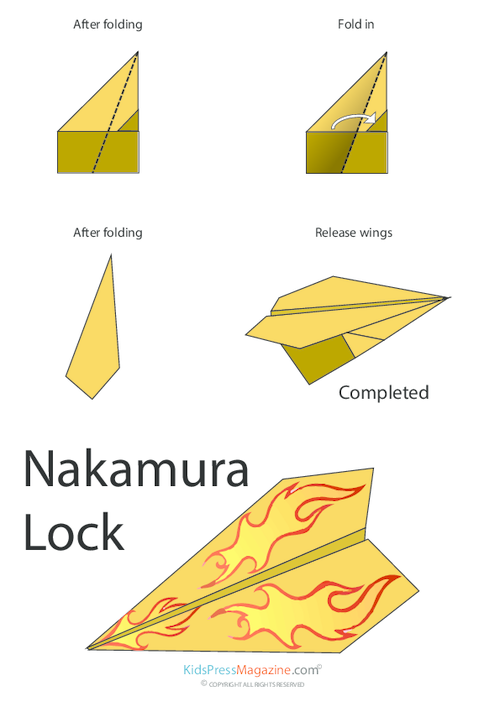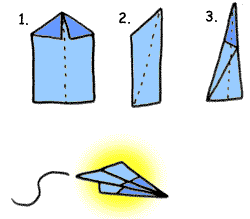

Now that your students are locked in on creating paper airplanes, start to dive into the science behind it! Evan-Moor’s STEM Lessons and Challenges grade 3 features a unit on airplanes and the physical science of air resistance. Record the test results on the Challenge Chart. After testing, have students try to design their own paper airplane, using components from the planes they’ve already made.Record the information on the Airplane Comparison Chart. Fly the planes to test time aloft and distance.This will help your plane catch the wind and propel itself upwards, using lift force.

Tilt your plane up slightly before you throw it, and release early. Tips for airplane throwing: Most planes require a loose and light grip, and a quick throw. Hint: For this plane, throw it angled more steeply upwards, instead of straight, to see it glide. Make a crease about one inch from the left edge and fold the right side/top wing to the left on this crease.Fold the top over itself again, crease well.Fold the top of the paper down, to the tip of the upside-down triangle.Repeat with the top-left corner point, forming a wide upside-down triangle at the top of the paper.Fold the top-right corner point to the center, about an inch and a half from the top of the paper.Lay the paper out in front of you, landscape style.Fold the top wing down so your edges align.Fold your plane in half, left side onto its right, so the edges line up.Flip your plane over so that your folds are on the table.This should create a small triangle at the point. Fold the top-right corner to the center, about one inch above the tip.The tip should be about ⅓ of the page from the bottom of the paper. Fold the point of the plane down, creating a fold along the bottom of the corner triangles.Use a nice level throw don’t aim too high or too low. Tip for throwing: For this plane, hold it slightly above your head when throwing to achieve a better liftoff. Fold the plane inwards, in half, so the previous folds are on the inside.Fold the right side again, along the crease.Do the same thing with the left corner.Fold the top-right corner to the center crease, lining up the edges and creating a triangle.Lay the paper out in front of you, portrait style.Staples also work, but will add weight to the plane. Add tape if you will be throwing the plane multiple times so it doesn’t fall apart after each throw. Keep your folding as symmetrical as possible for better flight results. Make good creases and tight folds to improve the aerodynamics of the plane. Tips for paper airplane folding: Line up your fold before you crease. Each column will measure the time, distance, and average measurements of each plane.įollow the directions to create three different paper airplane designs.
Paper airplane instructions trial#
Each row will be for an individual trial of one of the airplanes. You simply need three columns and nine rows. Once you have all the listed materials, you’ll need an Airplane Comparison Chart, like the one shown below.

It’s always fun to have the students decorate their planes! You can even have them give their planes a name and write it along the side.I’ve found that while children like to use colored construction paper, it is too heavy to fly and a bit more difficult to fold, so I would recommend regular printer paper or lightweight colored paper.You’ll need to gather some materials for paper airplane making and testing. This activity will teach your students about aerodynamics, the forces of flight, and the fun of paper airplanes! By making three different models of paper airplanes and testing each of them, students will begin to understand what makes a plane fly and how they can design their very own paper airplane! Listed below are three simple paper airplane designs to include in your STEM aerodynamics lesson. The children were engaged and interested for long periods of time, designing their own planes, coloring them, trying out different styles, and testing flight! Teach your students about the different components of flight while making it a fun and memorable experience! As a summer camp counselor, I used this project nearly every week. Paper airplanes are the perfect STEM project for classroom science lessons! It’s an easy and fun lesson idea for large groups of children, and teaches key scientific concepts like aerodynamics, velocity, thrust, speed, and other scientific forces.


 0 kommentar(er)
0 kommentar(er)
